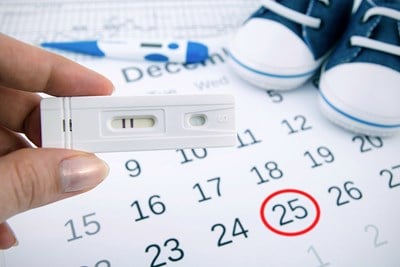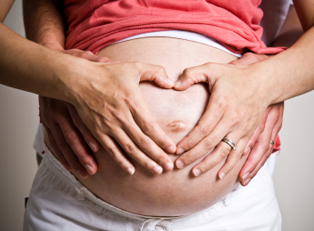Understanding exactly how your menstrual cycle works can be incredibly helpful when you’re trying to get pregnant. Your menstrual cycle is more than those 5 to 7 days when you’re on your period. It’s actually a (roughly) 28-day span that encompasses your period, ovulation, and the days in between when you’re body is getting ready.
Ovulation is probably the most important part of getting pregnant—because if you aren’t, you can’t. Knowing when you ovulate can help increase your chances of conceiving.
What is Ovulation?
Ovulation takes place when an egg is released from an ovary into one of the fallopian tubes. For the next 12 to 48 hours, the egg is available to be fertilized by sperm. If fertilization occurs, the fertilized egg implants itself in the uterine wall, and, voila, you’re pregnant! If the egg is not fertilized, however, it disintegrates and is expelled along with the unused uterine lining during your normal monthly menstrual period.
Women's menstrual cycles can vary greatly, but, on average, ovulation occurs anywhere from the 11th to the 21st day after the first day of your last period. Trying to calculate when you will ovulate can be difficult, however. Factors such as illness, anxiety, or changes in routine can throw off your menstrual cycles and cause you to ovulate earlier or later than expected. When things start changing, being able to recognize your own body’s signs of ovulation can help you figure out where you’re at in your cycle.
Take Your Temperature
One of the most reliable signs of ovulation is a higher basal body temperature (BBT). This is the lowest temperature the body achieves, usually during sleep. For accuracy, take your temperature immediately after you wake up before you even get out of bed. Your BBT will be about one-half to one degree Fahrenheit higher than normal. A small difference, but one of the best ways to tell if you’re ovulating.
Changing Fluids and Increased Libido
If you are squeamish or not up to checking out your cervical mucus, stick with your BBT. If you don’t feel l like tracking your temperature every day until you get pregnant, gently probe your cervix with a clean finger or a little toilet paper. Expect your cervix to be pretty dry immediately after your period. A few days before ovulation, you may notice some sticky fluids. Immediately before you ovulate, those fluids should be more pronounced and develop a stringy, slippery texture—almost the consistency of egg whites. It might sound a little gross, but the change helps protect sperm and allow it easier access to the egg.
Some women also experience increased sexual desire a day or two before ovulation when they are most fertile. Thank evolution and a throwback to the desperate need for 10 kids to carry on humanity.
Mittelschmerz
Other common signs of ovulation include a slight cramp-like pain in the abdomen called mittelschmerz, or "middle pain." It usually occurs at the time of ovulation. Light bleeding, or “spotting,” during ovulation is also normal. Some women notice their breasts become sore or tender right after ovulation and before the period—a normal reaction to increased progesterone and stimulated lactic glands.
One of the best ways to know when you’re ovulating is to track your cycle, and that entails understanding what heralds a ready egg. Tracking ovulation is not always easy, and recognizing the signs can be tricky, too, particularly since it can look a little different for every woman. You need to become very familiar with your body and pay attention to subtle signs you might miss otherwise, but the results are worth the effort. Once you can tell when you are ovulating, you are well on your way to becoming pregnant.



